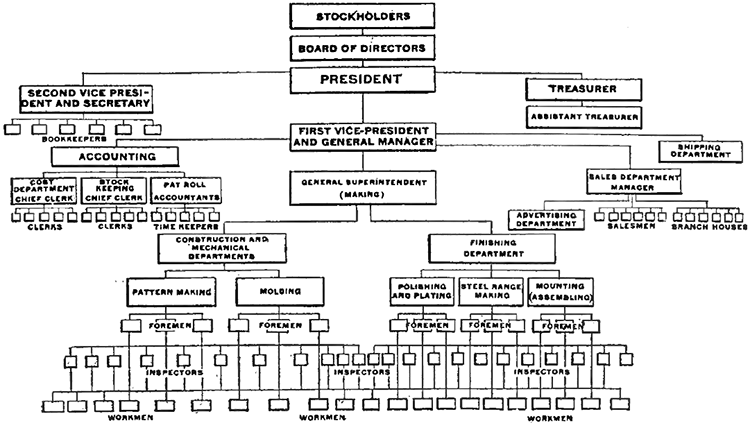Chapter 10 Hierarchies
The word “hierarchy” means a group of individuals or things arranged in a specific order. It is often associated with a social order found in every office (as might be expressed on an organizational chart) or other organizations such as schools, associations, and so on.
More generally, hierarchies are a special type of graph. Hierarchies have no cycles (that is, no loops) and can be depicted in unique ways such as treemaps and pie hierarchies. Hierarchies can be effective for unique types of analysis such as decision trees. Also, hierarchies can be extracted from more complex graphs and used as a way to organize and analyze the graph.
Organizational Charts
Organizational charts have existed for more than a century. With the beginnings of large companies after the Industrial Revolution, organizational charts were recommended by early managers not necessarily as a tool for analysis but as a tool for command and control. In Graphic Methods for Presenting Facts (New York: Engineering Magazine Company, 1914), Willard Cope Briton wrote, “If such a chart is made, there will be fewer cases of conflict or of short-circuiting of orders.” Figure 10-1 shows an example of an early organizational chart.

Figure 10-1: This organizational chart is for a stove manufacturing company from the 1910s. Image courtesy Prelinger Library (www.prelingerlibrary.org).
Source: Graphic ...
Get Graph Analysis and Visualization: Discovering Business Opportunity in Linked Data now with the O’Reilly learning platform.
O’Reilly members experience books, live events, courses curated by job role, and more from O’Reilly and nearly 200 top publishers.

